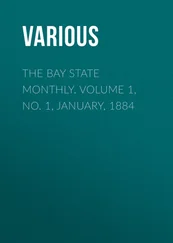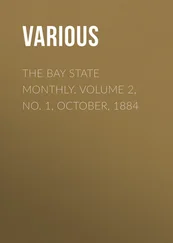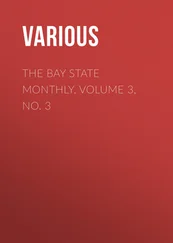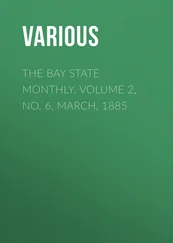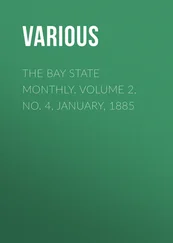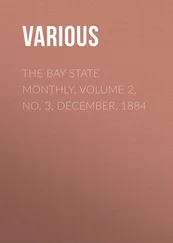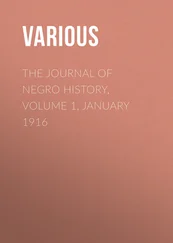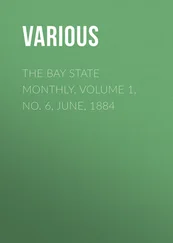Various - The Journal of Negro History, Volume 5, 1920
Здесь есть возможность читать онлайн «Various - The Journal of Negro History, Volume 5, 1920» — ознакомительный отрывок электронной книги совершенно бесплатно, а после прочтения отрывка купить полную версию. В некоторых случаях можно слушать аудио, скачать через торрент в формате fb2 и присутствует краткое содержание. Жанр: foreign_antique, periodic, История, foreign_edu, на английском языке. Описание произведения, (предисловие) а так же отзывы посетителей доступны на портале библиотеки ЛибКат.
- Название:The Journal of Negro History, Volume 5, 1920
- Автор:
- Жанр:
- Год:неизвестен
- ISBN:нет данных
- Рейтинг книги:4 / 5. Голосов: 1
-
Избранное:Добавить в избранное
- Отзывы:
-
Ваша оценка:
- 80
- 1
- 2
- 3
- 4
- 5
The Journal of Negro History, Volume 5, 1920: краткое содержание, описание и аннотация
Предлагаем к чтению аннотацию, описание, краткое содержание или предисловие (зависит от того, что написал сам автор книги «The Journal of Negro History, Volume 5, 1920»). Если вы не нашли необходимую информацию о книге — напишите в комментариях, мы постараемся отыскать её.
The Journal of Negro History, Volume 5, 1920 — читать онлайн ознакомительный отрывок
Ниже представлен текст книги, разбитый по страницам. Система сохранения места последней прочитанной страницы, позволяет с удобством читать онлайн бесплатно книгу «The Journal of Negro History, Volume 5, 1920», без необходимости каждый раз заново искать на чём Вы остановились. Поставьте закладку, и сможете в любой момент перейти на страницу, на которой закончили чтение.
Интервал:
Закладка:
The Fugitive Slave Bill had been signed but a month when Garrison pointed out in The Liberator that a northward trek of free people of color was already under way. "Alarmed at the operation of the new Fugitive Slave Law, the fugitives from slavery are pressing northward. Many have been obliged to flee precipitately leaving behind them all the little they have acquired since they escaped from slavery." 84The American Anti-Slavery Society's report also notes the consternation into which the Negro population was thrown by the new legislation 85and from many other contemporary sources there may be obtained information showing the distressing results that followed immediately upon the signing of the bill. Reports of the large number of new arrivals were soon coming from Canada. Hiram Wilson, a missionary at St. Catharines, writing in The Liberator of December 13, 1850, says: "Probably not less than 3,000 have taken refuge in this country since the first of September. Only for the attitude of the north there would have been thousands more." He says that his church is thronged with fugitives and that what is true of his own district is true also of other parts of southern Ontario. Henry Bibb, in his paper The Voice of the Fugitive 86published frequent reports of the number of fugitives arriving at Sandwich on the Detroit River. In the issue of December 3,1851, he reports 17 arrivals in a week. On April 22, 1852, he records 15 arrivals within the last few days and notes that "the Underground Railroad is doing good business this spring." On May 20, 1852, he reports "quite an accession of refugees to our numbers during the last two weeks" and on June 17 notes the visit of agents from Chester, Pennsylvania, preparatory to the movement of a large number of people of color from that place to Canada. On the same date he says: "Numbers of free persons of color are arriving in Canada from Pennsylvania and the District of Columbia, Ohio and Indiana. Sixteen passed by Windsor on the seventh and 20 on the eighth and the cry is 'Still they come.'" The immigration was increasing week by week, for on July 1 it was reported in The Voice of the Fugitive that "in a single day last week there were not less than 65 colored emigrants landed at this place from the south.... As far as we can learn not less than 200 have arrived within our vicinity since last issue." Almost every number of the paper during 1852 gives figures as to the arrivals of the refugees. On September 23 Bibb reported the arrival of three of his own brothers while on November 4, 1852, there is recorded the arrival of 23 men, women and children in 48 hours. Writing to The Liberator of November 12, 1852, Mary E. Bibb said that during the last ten days they had sheltered 23 arrivals in their own home. The American Missionary Association, which had workers among the fugitives in Canada noted in its annual report for 1852 that there had been a large increase of the Negro population during the year 87while further testimony to the great activity along the border is given by the statement that the Vigilance Committee at Detroit assisted 1,200 refugees in one year and that the Cleveland Vigilance Committee had a record of assisting more than a hundred a month to freedom. 88
The northern newspapers of the period supply abundant information regarding the consternation into which the Negroes were thrown and their movements to find places of safety. Two weeks after President Fillmore had signed the Fugitive Slave Bill a Pittsburgh despatch to The Liberator stated that "nearly all the waiters in the hotels have fled to Canada. Sunday 30 fled; on Monday 40; on Tuesday 50; on Wednesday 30 and up to this time the number that has left will not fall short of 300. They went in large bodies, armed with pistols and bowie knives, determined to die rather than be captured." 89A Hartford despatch of October 18, 1850, told of five Negroes leaving that place for Canada; 90Utica reported under date of October 2 that 16 fugitive slaves passed through on a boat the day before, bound for Canada, all well armed and determined to fight to the last; 91 The Eastport Sentinel of March 12 noted that a dozen fugitives had touched there on the steamer Admiral , en route to St. John's; The New Bedford Mercury said: "We are pleased to announce that a very large number of fugitive slaves, aided by many of our most wealthy and respected citizens have left for Canada and parts unknown and that many more are on the point of departure." 92The Concord, New Hampshire, Statesman reported: "Last Tuesday seven fugitives from slavery passed through this place … and they probably reached Canada in safety on Wednesday last. Scarcely a day passes but more or less fugitives escape from the land of slavery to the freedom of Canada … via this place over the track of the Northern Railroad." 93
Many other examples of the effect of the Fugitive Slave Act might be noted. The Negro population of Columbia, Pennsylvania, dropped from 943 to 487 after the passing of the bill. 94The members of the Negro community near Sandy Lake in northwestern Pennsylvania, many of whom had farms partly paid for, sold out or gave away their property and went in a body to Canada. 95In Boston a fugitive slave congregation under Leonard A. Grimes had a church built when the blow fell. More than forty members fled to Canada. 96Out of one Baptist church in Buffalo more than 130 members fled across the border, a similar migration taking place among the Negro Methodists of the same city though they were more disposed to make a stand. At Rochester all but two of the 114 members of the Negro Baptist church fled, headed by their pastor, while at Detroit the Negro Baptist church lost 84 members, some of whom abandoned their property in haste to get away. 97A letter from William Still, agent of the Philadelphia Vigilance Committee, to Henry Bibb at Sandwich says there is much talk of emigration to Canada as the best course for the fugitives. 98 The Corning Journal illustrates the aid that was given to the fugitives by northern friends. Fifteen fugitives, men, women and children, came in by train and stopped over night. In the morning a number of Corning people assisted them to Dunkirk and sent a committee to arrange for passage to Canada. The captain of the lake steamer upon which they embarked, very obligingly stopped at Fort Maiden, on the Canadian side, for wood and water and the runaways walked ashore to freedom. "The underground railroad is in fine working order," is the comment of The Journal . "Rarely does a collision occur, and once on the track passengers are sent through between sunrise and sunset." That time did not dull the terrors of the Fugitive Slave Act is shown by the fact that every fresh arrest would cause a panic in its neighborhood. At Chicago in 1861, almost on the eve of the Civil War, more than 100 Negroes left on a single train following the arrest of a fugitive, taking nothing with them but the clothes on their backs and most of them leaving good situations behind." 99
The Underground Railroad system was never so successful in all its history as after 1850. Despite the law, and the infamous activities of many of the slave-catchers, at least 3,000 fugitives got through to Canada within three months after the bill was signed. This was the estimate of both Henry Bibb and Hiram Wilson and there were probably no men in Canada who were better acquainted with the situation than these two. In The Voice of the Fugitive of November 5, 1851, Bibb reported that "the road is doing better business this fall than usual. The Fugitive Slave Law has given it more vitality, more activity, more passengers and more opposition which invariably accelerates business.... We can run a lot of slaves through from almost any of the bordering slave states into Canada within 48 hours and we defy the slaveholders and their abettors to beat that if they can.... We have just received a fresh lot today and still there is room." The Troy Argus learned from "official sources" in 1859 that the Underground Railroad had been doing an unusually large business that year. 100Bibb's newspaper reports, December 2, 1852, that the underground is working well. "Slaveholders are frequently seen and heard, howling on their track up to the Detroit River's edge but dare not venture over lest the British lion should lay his paw upon their guilty heads." Bibb kept a watchful eye on slave-catchers coming to the Canadian border and occasionally reported their presence in his paper. Underground activity was also noted in The Liberator . "The underground railroad and especially the express train, is doing a good business just now. We have good and competent conductors," was a statement in the issue of October 29, 1852. 101
Читать дальшеИнтервал:
Закладка:
Похожие книги на «The Journal of Negro History, Volume 5, 1920»
Представляем Вашему вниманию похожие книги на «The Journal of Negro History, Volume 5, 1920» списком для выбора. Мы отобрали схожую по названию и смыслу литературу в надежде предоставить читателям больше вариантов отыскать новые, интересные, ещё непрочитанные произведения.
Обсуждение, отзывы о книге «The Journal of Negro History, Volume 5, 1920» и просто собственные мнения читателей. Оставьте ваши комментарии, напишите, что Вы думаете о произведении, его смысле или главных героях. Укажите что конкретно понравилось, а что нет, и почему Вы так считаете.

